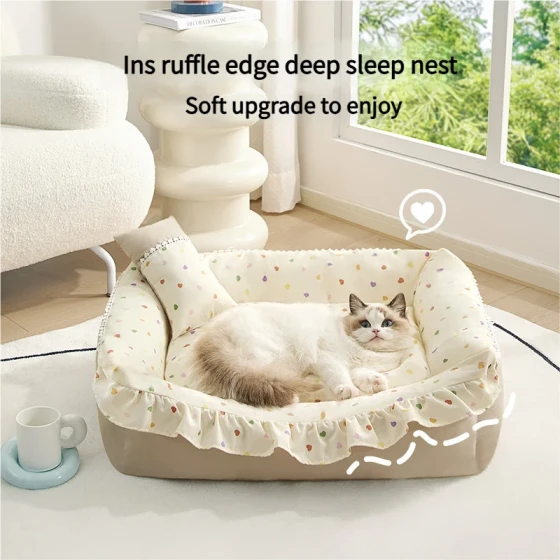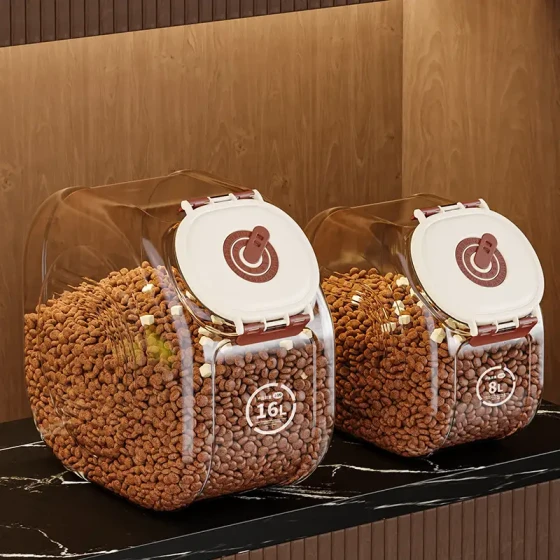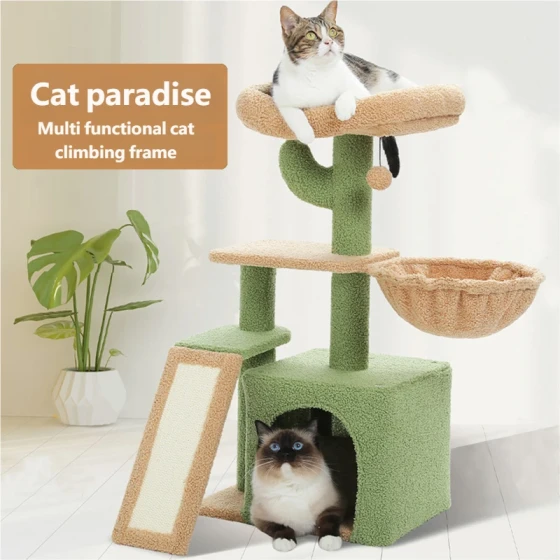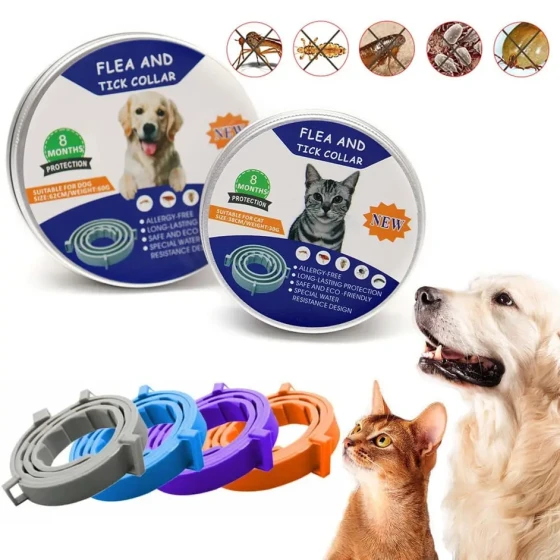How Many Kibbles Does a 45-Day-Old Kitten Eat_Kitten Feeding Amount Guide and Precautions
For kittens around 45 days old, they are in a key stage of rapid growth and development, usually starting to wean or fully weaned, with higher intake and nutritional needs for cat food. Generally, a 45-day-old kitten needs to consume about 25-35 grams of kitten-specific dry food daily (dry food as an example), combined with wet kitten food, fed multiple times a day to ensure sufficient energy and nutrients. The specific feeding amount should be adjusted based on the energy density of the cat food, the kitten’s weight, activity level, and individual differences, and always refer to the feeding guidelines on the cat food packaging.
Kitten Feeding: The Growth Secrets from "Milk Baby" to "Little Foodie"
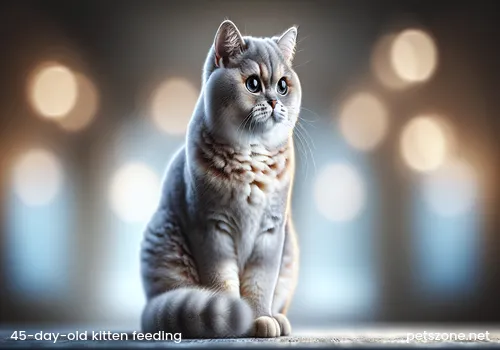
Kittens’ development from birth to weaning and then independent eating moves the hearts of pet owners deeply. Especially for 45-day-old kittens, they are at the critical period transitioning from complete dependence on mother’s milk or milk replacer to mainly solid food. At this time, scientific and reasonable feeding not only helps them to wean successfully but also lays the foundation for healthy growth in the future.
1. Feeding Amount for 45-Day-Old Kittens: A Flexible "Measuring Cup"
A 45-day-old kitten is about 1.5 months old, usually weighing between 500 grams and 1 kilogram. Their stomach capacity is small, and the digestive system is not fully developed, so they need "small and frequent meals."
- Dry Food Reference Amount: Considering the energy density difference among commercial kitten foods, it is hard to give an exact number of "kibbles." But generally, for a 45-day-old kitten, the total daily dry food intake is about 25-35 grams. This amount should be divided into 4-6 meals a day, with each meal controlling the amount to about 5-8 grams.
- Wet Food Combination: It is strongly recommended to supplement kitten-specific wet food (canned or pouch) along with dry food. Wet food provides adequate moisture, helps kittens’ digestion and absorption, and reduces the risk of urinary tract problems. The daily amount of wet food can be adjusted according to product instructions, usually replacing part of the calories from dry food. For example, feed wet food in the morning and evening, and dry food at noon and before bed.
- How to Tell if They're Full: After feeding, if the kitten’s belly is slightly rounded, their spirit is good, and stools are normal, it usually means they are full. If the kitten is still looking for food after eating, or suddenly increases intake, the feeding amount may need to be slightly increased. Conversely, if they leave much food uneaten or have soft stools or vomiting, they may be overfed.
Tips: When first feeding dry food, it can be softened with warm water or goat milk powder to make a paste or semi-soft form for easier chewing and digestion. As their teeth develop, gradually reduce the softening until they eat dry food completely.
2. The "Four Pillars" of Kitten Feeding: Nutrition, Hydration, Environment, Patience
Healthy growth of kittens depends on the following core elements:
- Professional Kitten Food is the First Choice: It is crucial to choose a nutritionally balanced, easily digestible kitten-specific food. Kitten food often includes DHA, prebiotics, taurine, etc. to support brain, bone, immune system, and vision development. Quality kitten food will clearly mark "kitten-specific" or "suitable for all life stages" on the packaging.
- Adequate Drinking Water: Water is the source of life, especially important for kittens. Always provide fresh, clean drinking water. You can choose a cat water fountain or wide-mouth bowl placed where they can easily find it. If the kitten is not fond of drinking water, wet food is a great way to supplement moisture. Dehydration is very dangerous for kittens and may cause lethargy, poor appetite, and decreased skin elasticity.
- Regular Feeding Times and Environment: Establishing regular feeding times helps kittens develop good eating habits and gives them a sense of security. Feeding places should be quiet and fixed, avoiding disturbances while they eat.
- Patience and Observation: Every kitten is unique. Observing their appetite, spirit, and excretion is the best basis for adjusting the feeding plan. If any abnormal symptoms like anorexia, vomiting, diarrhea, constipation, or depression appear, seek veterinary help promptly.
3. Pitfalls and Traps in Kitten Feeding: Avoiding Them for Healthier Cats
During kitten feeding, some common mistakes and taboos require special attention to avoid “doing harm with good intentions.”
- Milk is not Cat Milk: Many people mistakenly think cow’s milk is good for cats, but most cats are lactose intolerant. Drinking cow’s milk can cause diarrhea, vomiting, and other digestive problems. Choose cat-specific goat milk powder or lactose-free milk instead.
- Be Cautious with Human Food: Leftovers high in salt, heavy seasoning, as well as chocolate, onions, grapes, bones, etc., are harmful or even toxic to cats. Do not feed kittens human food.
- Avoid Overfeeding: Although kittens need large amounts of nutrition for growth, overfeeding can cause indigestion, obesity, and even bone development issues. Feed strictly according to cat food instructions or vet advice, and closely monitor the kitten’s physique.
- Do Not Change Cat Food Frequently: Kittens’ digestive systems are sensitive, and frequent changes in cat food can cause gastrointestinal discomfort. If changing is needed, adopt the "7-day transition" method by gradually increasing the new food ratio and decreasing the old over 7-10 days, allowing the kitten’s stomach to adapt.
- Clean Feeding Utensils: Bowls for food and water should be washed daily to prevent bacteria growth causing digestive diseases.
4. Little “Episodes” on the Growth Path: Vaccinations and Deworming Should Not Be Ignored
Although this article mainly discusses feeding, kitten health depends not only on good nutrition but also on necessary medical care.
- Vaccinations: Around 45 days old is usually the right time for the first vaccination (specific timing depends on veterinary advice and kitten’s health). The feline triple vaccine effectively prevents fatal diseases like feline panleukopenia, feline viral rhinotracheitis, and calicivirus.
- Internal and External Deworming: Kittens are prone to internal parasites (such as roundworms, tapeworms) and external parasites (like fleas, ear mites). Regular deworming under vet guidance is an important part of keeping them healthy.
Remember, these medical care measures are just as important as balanced nutrition, together building a protective net for kitten health.
Frequently Asked Questions
Q1: Can a 45-day-old kitten eat only dry cat food?
A1: It is not recommended to feed only dry food. A 45-day-old kitten is at weaning or just weaned stage, with developing teeth and digestive system. Pure dry food can be hard to digest and lacks moisture. It is advised to combine wet kitten food or soften dry food with warm water when feeding.
Q2: What to do if the kitten often refuses to eat?
A2: First, check if the cat food is palatable, and try different flavors or brands of kitten food. Also observe if the kitten shows other discomfort symptoms such as lethargy, vomiting, diarrhea—if so, seek veterinary care promptly. Additionally, ensure the feeding environment is quiet, utensils are clean, and try small frequent meals.
Q3: Can human fish or chicken be fed to kittens?
A3: Occasionally feeding small amounts of cooked, unseasoned pure fish or chicken as a treat is acceptable. However, it should not be the main food because single meat type cannot provide all required nutrition, and excessive intake may cause imbalance. Salt and seasonings in human food are harmful to cats.
Q4: What to do if the kitten is constipated?
A4: Constipation may result from many factors like insufficient water intake, indigestion, hairballs, or parasites. Try increasing wet food feeding, ensure adequate water, and feed small amounts of plain pumpkin puree or probiotics to help bowel movement. If no improvement or accompanied by other symptoms, take the kitten to the vet immediately.
Q5: How to determine if cat food suits my kitten?
A5: Suitable cat food helps the kitten maintain a healthy physique, shiny coat, good spirit, and regular, formed stools. If the kitten has soft stools, vomiting, rough coat, or poor appetite, it may be time to consider changing the food.
Summary
Feeding a 45-day-old kitten is both a science and a responsibility. Mastering scientific feeding methods, choosing quality kitten food, providing ample water, and carefully observing their physical state are must-learn lessons for every responsible owner. Your careful care and patient companionship during their growth will be the strongest guarantee for a healthy and happy childhood. If unsure about anything, consulting a professional vet promptly is the safest choice, as "listening to the doctor is never wrong"!
References
* World Small Animal Veterinary Association (WSAVA) Global Nutrition Guidelines
* American Veterinary Medical Association (AVMA) related health information
* China Agricultural University College of Veterinary Medicine popular science articles
* Purina Kitten Feeding Guide
* Royal Canin Kitten Nutrition Research Report
